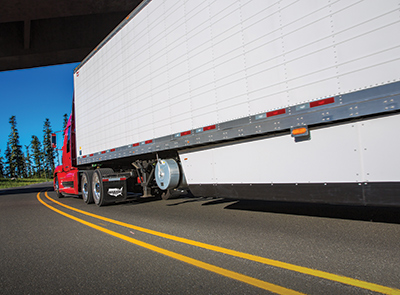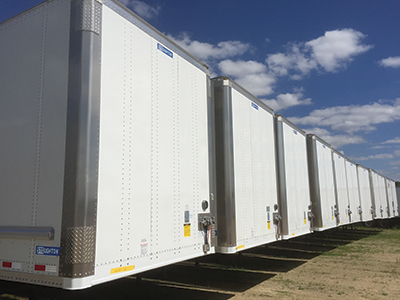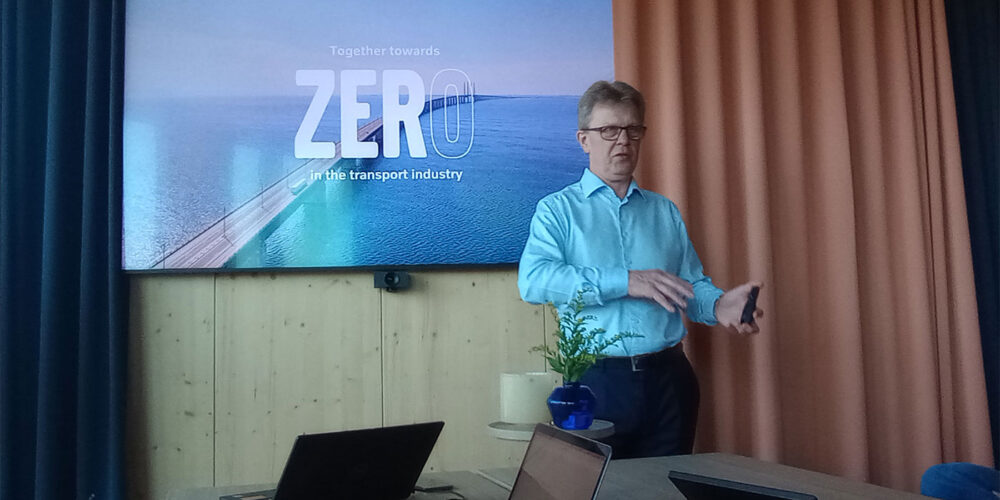Ready the reefers
 “The first thing that comes to mind is spec’ing a high-quality reefer lining system that not only withstands physical impact damage, but preferably one that also helps preserve thermal efficiency of the trailer’s insulation,” McCormack continued. “Barrier liners such as our ThermoGuard liner address both of these needs, while also promoting ease of maintenance and cleaning. Door placement can also make a difference as can the design of multi-temp compartments.”
“The first thing that comes to mind is spec’ing a high-quality reefer lining system that not only withstands physical impact damage, but preferably one that also helps preserve thermal efficiency of the trailer’s insulation,” McCormack continued. “Barrier liners such as our ThermoGuard liner address both of these needs, while also promoting ease of maintenance and cleaning. Door placement can also make a difference as can the design of multi-temp compartments.”
Having an idea of the freight profile and the expected ambient environment are key to selecting the correct insulation. Take, for example, a consistent route in the southern areas of the country hauling frozen foods—this would require a more thermal-efficient trailer than hauling fresh produce in the north. Sometimes interior width or height requirements will drive available insulation options. Wabash’s Adkins noted that solar gain plays a role in the battle for thermal efficiency. “A dark-colored trailer will absorb solar energy,” he said, explaining that Wabash National’s SolarGuard roof system reflects heat-generating UV rays to reduces solar gain. “Your dealer has tools to help determine the best thermal package that meets your requirements.”
Taking thermal performance another step, Wabash also unveiled its introduced molded structural composites in its truck bodies in October 2015, and exhibited the first all-composite refrigerated van concept trailer at TMC in February 2016. In refrigerated van trailer applications, the molded structural composite technology provides up to 20% improvement in thermal performance and is up to 15% lighter, compared to conventional designs, while significantly improving puncture and damage resistance, according to Wabash. In addition, the molded structural composite floor systems support higher floor ratings—up to 24,000 lbs. in the refrigerated van trailer.
Utility Trailer’s Olsen stressed the importance of buying the most thermally efficient trailer possible, pointing to Utility’s Foam In Place insulation process, which ensures a 360-degree insulation envelope with no interior to exterior heat conduction points. “The ambient temperature of the route will have less effect on a well-insulated, thermally efficient trailer,” Olsen said.
Streamlining efficiency
Not long ago, it was rare to see a trailer sporting side skirts and boat tail aerodynamic components; today, it’s nearly the standard. Fleets are reaping the fuel efficiency rewards offered by trailer aerodynamic add-ons. While it might seem counter-intuitive to add pounds to a trailer you spent time spec’ing to a lower weight, every trailer expert Fleet Equipment spoke with said that the fuel cost savings from trailer aerodynamic devices far outweigh (pun intended) any added bulk. For example, Stoughton’s Geisen said that skirts add nearly 200 lbs. to a trailer but they provide more fuel efficiency than any other aerodynamic device out there.
“Most trailers cube out before weighing out, so in those cases the added weight of the aero devices has no impact on freight efficiency,”  explained Brian Bauman, vice president and general manager of Wabash Composites. “In the reverse case, when a trailer weighs out before cubing out, the fuel savings benefit significantly outweighs the benefit of the extra freight that could be hauled.
explained Brian Bauman, vice president and general manager of Wabash Composites. “In the reverse case, when a trailer weighs out before cubing out, the fuel savings benefit significantly outweighs the benefit of the extra freight that could be hauled.
“Even with some of the heaviest solutions in the market and extremely low fuel prices, we are talking about maybe a 1% reduction in miles per gallon based on the weight alone, offset by 9% plus gains in fuel economy with the right aerodynamic system solution,” Bauman concluded.
Now for the obligatory application caveat: Not every over-the-road operation is created equal. Mountainous routes or unique loads can impact the gains from aerodynamic devices. It’s best to work with your supplier to ensure that your trucks are pulling as much efficiency as possible from your trailers.
Trucks and trailers taking the next step in the relationship
Emissions regulations are ever tightening. Slowly, but surely, the regulators are moving toward a more holistic view of truck efficiency beyond just the truck’s power plant. As regulations continue to roll down the road, the truck and trailer will have to work together to continue to push the boundaries of what is possible in terms of efficiency demands.
“Great Dane is working with federal and state agencies to develop new technologies to address trailer fuel economy and safety, including new ways to find savings through aerodynamics, materials selection, construction techniques and trailer weight reduction,” McCormack said. He went on to add that right now, and in the future, total cost of ownership should continue to be of top of mind for specifiers and buyers.
“A quality trailer that meets the fleet’s specific needs will be better in the long run than a less expensive, but lower quality trailer,” he said. “Fleets should also focus on the trailer’s total lifecycle, including the need for a responsive partner for required aftermarket services.”














